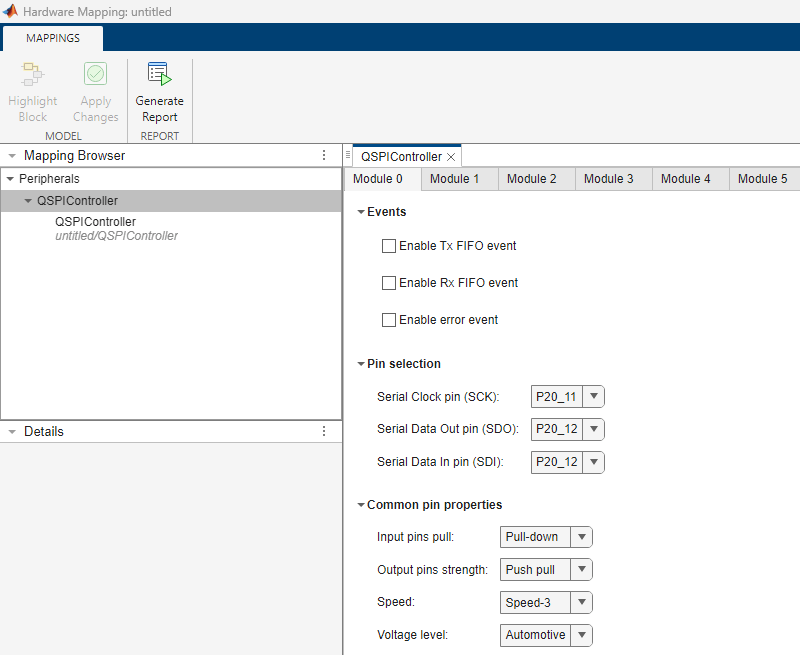QSPI Controller Peripheral Configuration
Map QSPI controller peripherals in the Infineon AURIX model to peripheral registers in the MCU
Since R2024a
Description
View and edit the map of peripherals in the Infineon® AURIX™ model to the hardware peripherals.
Using the Peripheral Configuration tool, you can:
View and edit configuration parameters for QSPI controller block.
Configure the global parameters. To set the group peripheral, select peripheral in Browser > Peripherals >
QSPI Controller. For more, see Map Tasks and Peripherals Using Hardware Mapping.Check for any conflicts between peripherals.
Open the QSPI Controller Peripheral Configuration
In the Simulink toolstrip, go to Hardware tab and click Hardware Mapping.

Parameters
Version History
Introduced in R2024a
